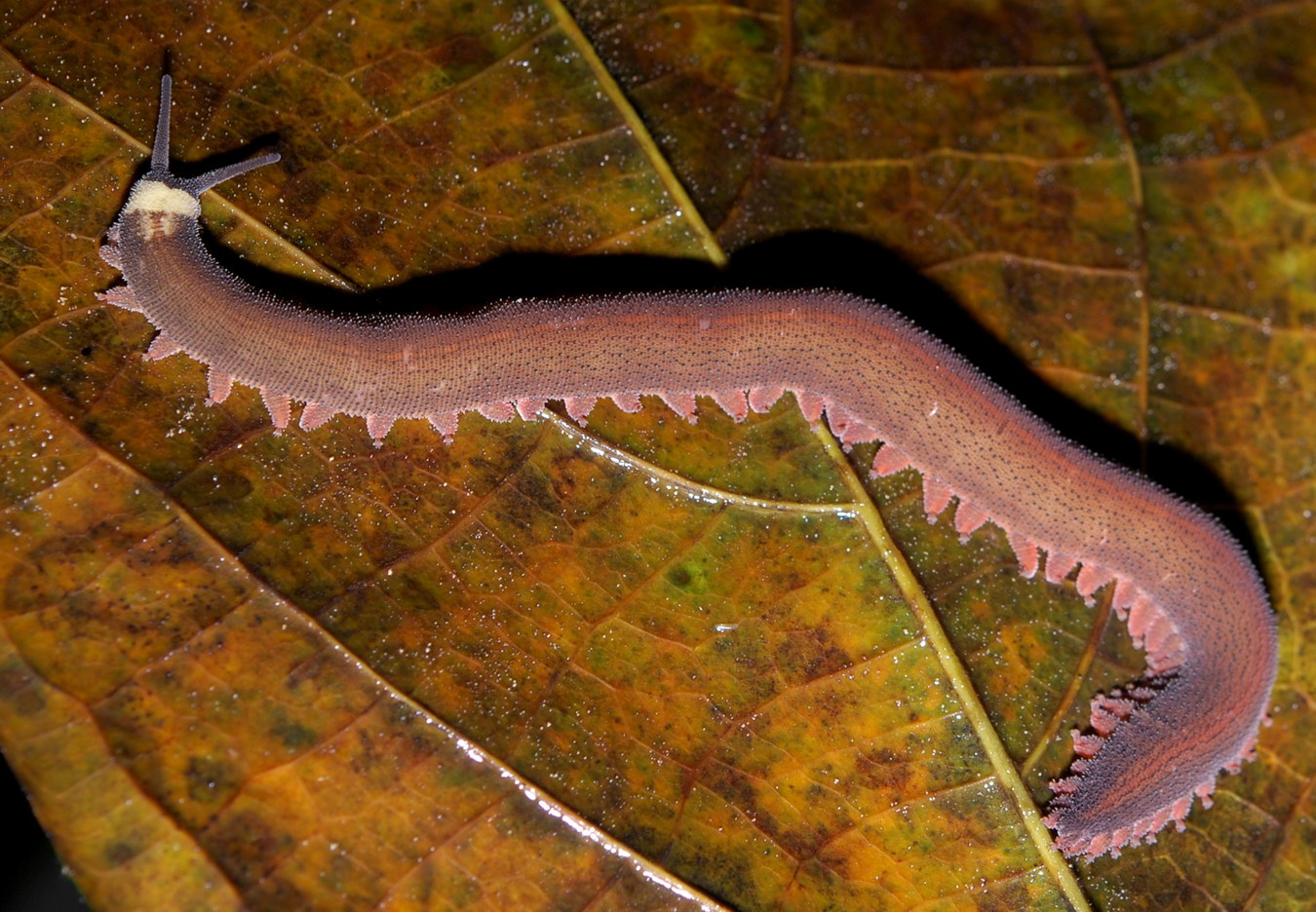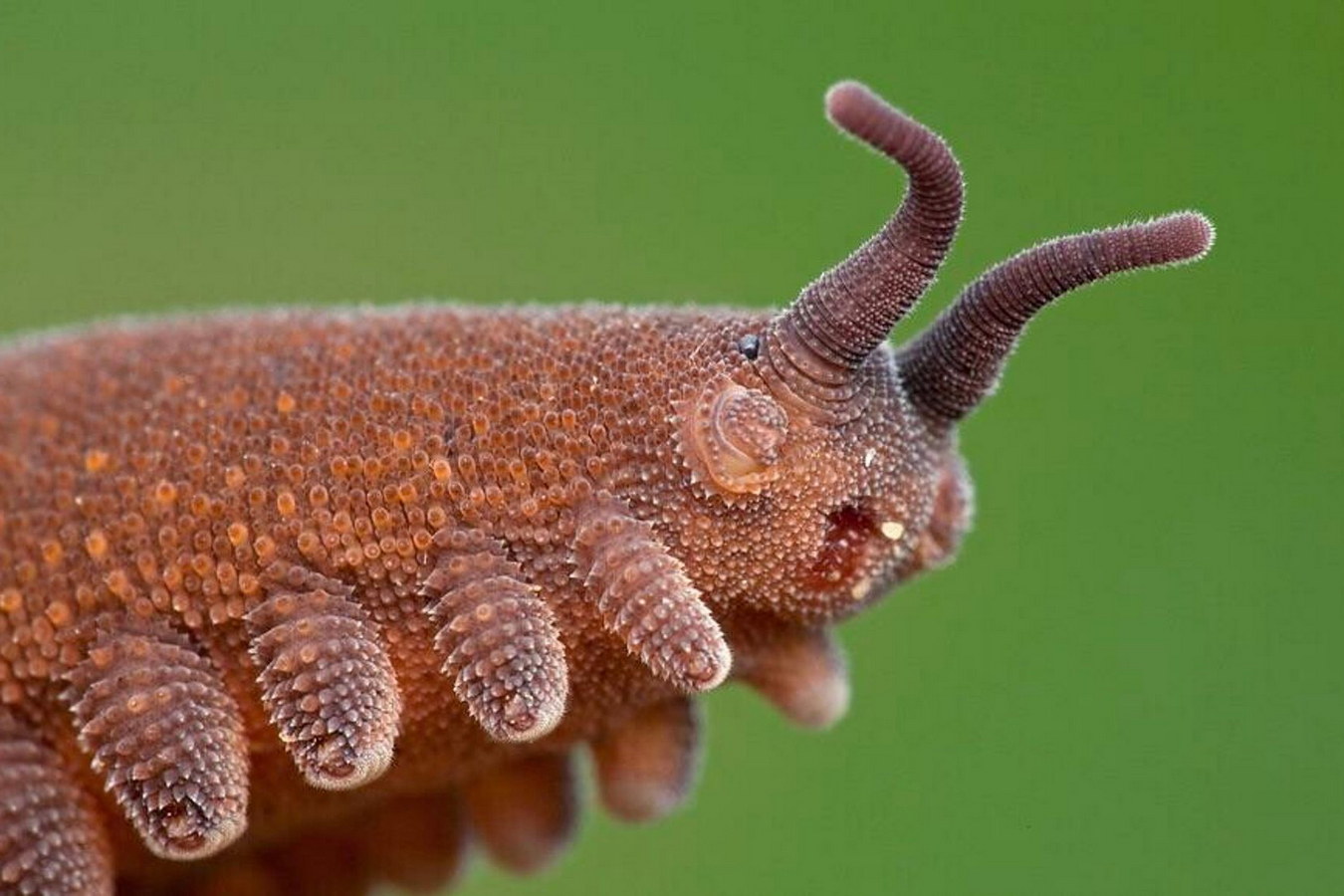The southern region of Vietnam is in the distribution map of velvet worms. In 2013, a research team from Leipzig University (Germany) first recorded the presence of this unique animal in Vietnam.

In the animal kingdom, the phylum Onychophora includes strange animals with a long and smooth body like a worm, a head with two "hairs" like a snail, and many limbs like centipedes or millipedes. Photo: Wikispecies.

Its native range is the tropics of Asia, Africa, the Americas and Australia. It is the only phylum in the animal kingdom that is entirely endemic to the terrestrial environment. Photo: Portal de Zoologia de Pernambuco.
- Top 12 Animals with the strangest sleeping habits
- Top 12 most mysterious black animals
- Top 12 Animals with the weirdest brains on the planet
- Top 10 animals with the most stomachs on the planet

In the wild, velvet worms often hide in crevices and fallen leaves on the ground. They come out at night or after the rain to hunt other invertebrates. Photo: Zoological Studies.

Velvetworms have an unusual way of hunting: They immobilize their prey by spraying sticky slime secreted from holes in the sides of their mouths, then devouring them. Photo: Science Learning Hub.

On each of their legs are a pair of hard, retractable chitinous claws. This led to the naming of the phylum Onychophora, with the Ancient Greek word for "onyches" for "claw". Photo: Ruppert alx-r@gmx.net.

The antennae on the head of the velvet worm act as a receptor for physical and chemical influences. At the base of each whisker is a simple black dot-like eye that can perceive color and light. Photo: National Geographic.

Velvet worms are about 6 cm long when mature. These animals reproduce sexually. Most velvet worms lay eggs, but some species give birth to live young (the eggs hatch from within the mother's body). Photo: Otago Daily Times.

In terms of evolution, velvet worms are not closely related to other worms, but are considered close relatives of Arthropoda, including insects, crustaceans, spiders, centipedes, millipedes... Photo: Otago Daily Times.

This makes velvet worms of particular interest to paleontologists, as they can help reconstruct the ancestral images of arthropods. Photo: A&F Animals.

To date, about 200 species of velvet worm have been described, although the actual number is likely larger. They are little known due to their huddled lifestyle, out of sight of humans. Photo: Sciences et Avenir.

The southern region of Vietnam is in the distribution map of velvet worms. In 2013, a research team from Leipzig University (Germany) first recorded the presence of this unique animal in Vietnam. Photo: BBC Science Focus Magazine.






